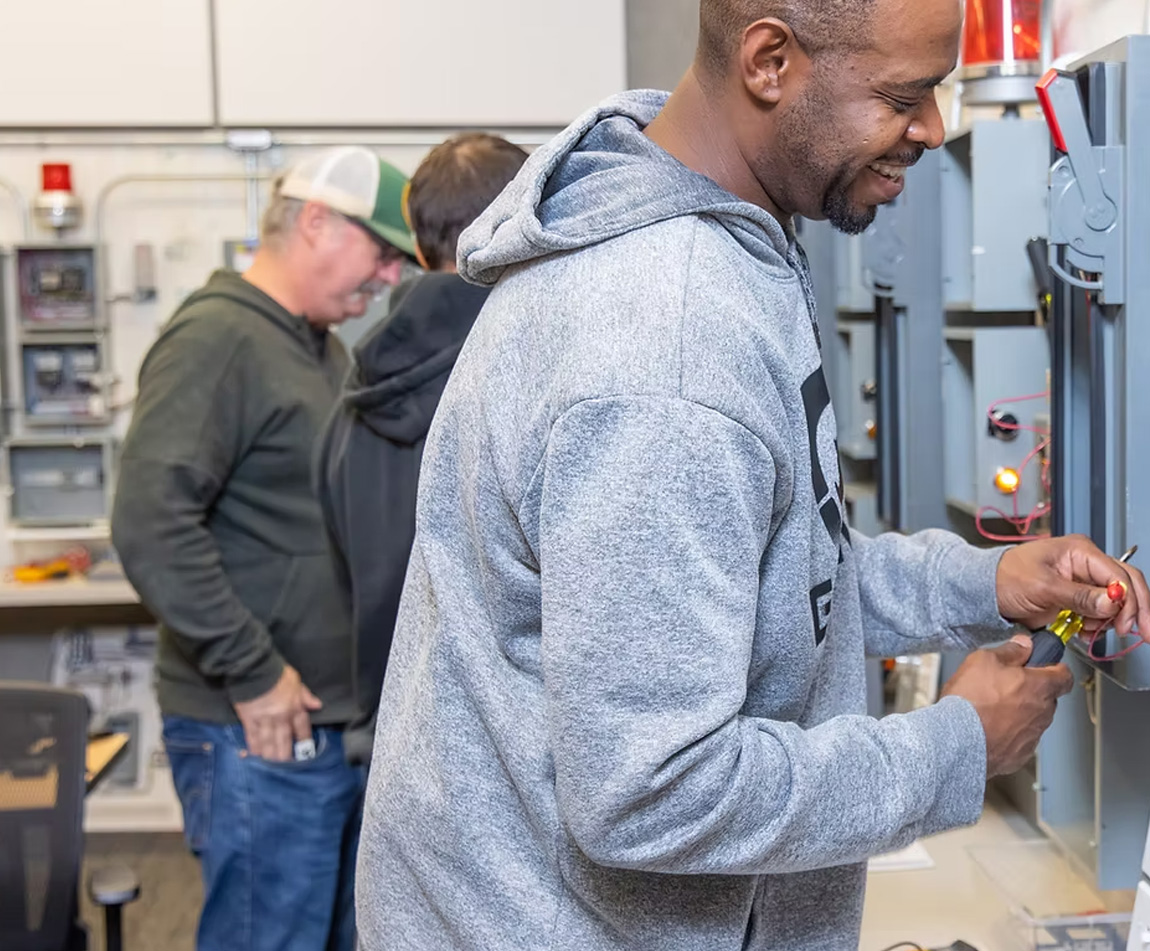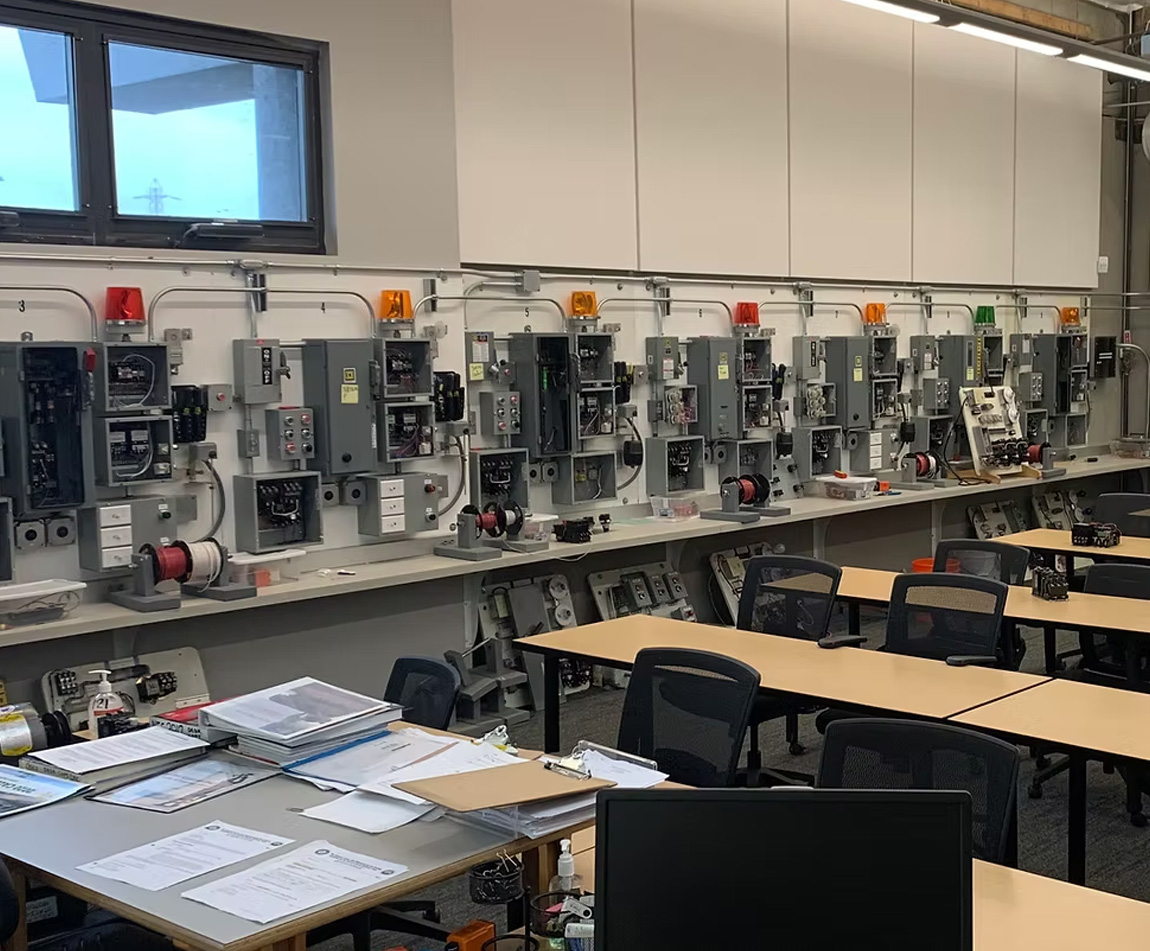
What is an Apprenticeship?
Rooted in thousands of years of history, apprenticeships are evolving to include something for everyone. At the heart of any apprenticeship is the combination of on-the-job training and classroom instruction. It is the essence of the “Earn & Learn” model.

Benefits of Apprenticeship
For years, we have heard that a college degree is essential to earn a good living and have a solid career path. While it’s true that college graduates are typically less affected by economic downturns, there are multiple ways to get there. You do have options and the apprenticeship option has many benefits.
Earn while you are learning
- An apprenticeship is a paid job. Depending on the program, classes are held on weekends, at night or during work hours.
Practical Training
- The on-the-job training and in-class courses are directly applicable to the job.
- We offer college credit for the instructional portion of our apprenticeship programs.
Wage increases
- Apprentices earn periodic raises as the program progresses and new skills are acquired.
No college debt for related courses
- Apprenticeship classroom instruction is offered free of charge to the apprentices. (Note: There are fees affiliated with general education classes, which are taken outside of the apprenticeship program, as a means to earn an Associate’s Degree).
College and/or industry recognized certificates
- CLPCCD apprentices earn a certificate of achievement from the college, as well as from the trade or an industry association.
Pathway to an Associate's Degree
- Many of Chabot and Las Positas Colleges’ apprenticeship programs have a pathway for an apprentice to earn an Associate’s degree either during or after the apprenticeship is complete.
Greater chance of being hired permanently
- 94% of apprentices who complete an apprenticeship program retain employment.

How to Become an Apprentice
Apprenticeship opportunities are offered through employers or program sponsors such as associations or a construction trade joint apprenticeship committees. There are hundreds of apprentice programs across California and the number and variety increases every month.
If you’re interested in being an apprentice, you must apply with the specific program sponsor (apprenticeship organization) or employer in order to be accepted into their program. Your on-the-job training and classroom instruction are set up through the program and/or employer. Find information and links to our programs here.
Note that many apprenticeship programs require tests or other assessments as part of their initial application process, so be sure to research and understand the prerequisites for any program you decide to pursue. If you are concerned about these prerequisites, see the information below on pre-apprenticeship programs.

Which Career to Choose
The first step is to determine the kind of work you want to do. We have several apprenticeship programs from which you can receive college credit through either Chabot or Las Positas College.
Click here for a list of our Chabot College and Las Positas College programs and their contact information. We have programs in:
- Advanced Manufacturing
- Construction
- Early Childhood Development
- Healthcare
- Transportation/Logistics
As a reminder, you must apply to these programs directly. Each program has its own application and acceptance process. Once you have signed an apprenticeship agreement with a specific program, they will direct you to the next steps in getting both college credit for your instructional time and connect you with an employer.
If you don’t find a career that interests you through CLPCCD, there are over 150 construction trade occupations and many more apprenticeship programs in non-traditional occupations in California.
Here are a few places to explore:
- Bay Area Community Colleges
- California Division of Apprenticeship Standards
- CalApprenticeship.org
Search for programs nationally:
- Apprenticeship.gov
- ApprenticeshipPath

Career Assessment Can Offer Direction
If you’re having difficulties deciding which way you want to go, taking a career assessment can help. There are several ways to assess what fields are a good match for you.
- Read the Career Assessment tip sheet from our partner program, Tri-Valley Career Center
- Take one of the Career Coach assessments through Las Positas College
- Explore careers on the Dept. of Labor’s career site, CareerOneStop
- Visit the Department of Labor’s Apprenticeship site, Apprenticeship.gov

Pre-Apprenticeships to Get Started
- Pre-apprenticeships offer test preparation and learning skills to help prepare someone to enter an apprenticeship program, and are particularly aimed at young people.
- Pre-apprenticeship programs offer training only – no paid work experience – but attending one can aid in the acceptance into an apprenticeship program.
- Primarily offered for preparation to go into the construction trades (though growing in non-traditional fields, as well), pre-apprenticeship programs teach foundational skills to be successful in an apprenticeship program and often include the opportunity to explore different options.
- While there is no guarantee that attending a pre-apprenticeship program will get you into your choice of apprenticeship programs, participation in a pre-apprenticeship program can prepare you for the entry requirements.
- The California Building Trades Councils' website gives the location of pre-apprenticeship programs located throughout California. https://apprenticeship.cabuildingtrades.org/pre-apprenticeship/ If you’re interested, find a location near you and contact the host agency listed for information about their pre-apprenticeship programs.